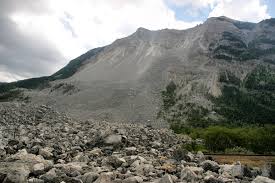Landslides are a natural phenomenon that occurs as a result of the movement of rocks and soil. Historians and geologists even identify if the disaster occurred tens of millions of years ago.
Reported from the Geology page, the largest landslide disaster ever occurred at Mount Heart northwest of Wyoming, United States (US). The subaerial landslide occurred about 50 million years ago.
Mount Heart landslides occur due to weathering, erosion, and volcanic activity. The most notable evidence that scientists found was the existence of a slide which was a large blockade of chalk.
Landslides occur when the large Madison Limestone slab (which is about 1,600 feet thick and over 400 square miles wide) slides down a gradual slope with an average slope of less than two degrees.
The limestone slab which moves then breaks into small pieces. At that time more than 100 slabs spread over an area of approximately 1300 square miles.
The amazing thing is that these plates are super large, some of which are up to 5 km wide. Many of these fragments are now buried by volcanic material.
Geologists agree that the slides are primarily responsible for spreading out the massive blocks. Even so, many theories explain the large boulder can be transported as far as 48km above sea level.
In general, theories speculate about the driving force of the chunks (whether due to volcanic activity, earthquakes, or just Earth’s gravity).
Then the theory also questions whether the movement of these chunks occurs in the same period or does it occur due to repeated events occurring all the time.
Despite this, the Mount Heart landslide is the largest subaerial landslide in the world ever recognized. It does not rule out the possibility of a much bigger disaster occurring in previous times



